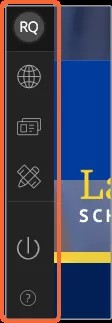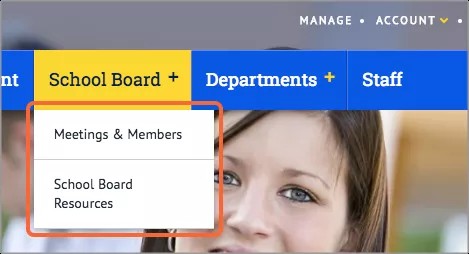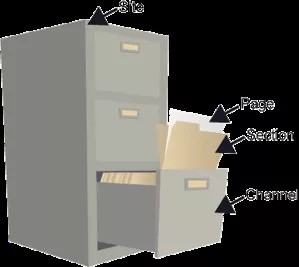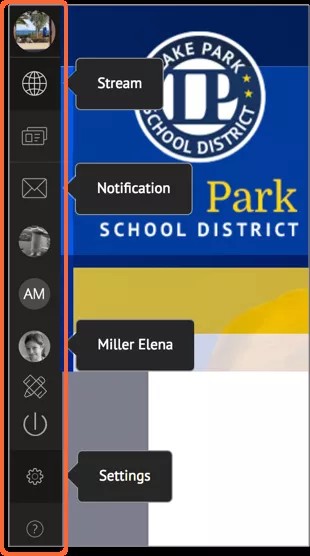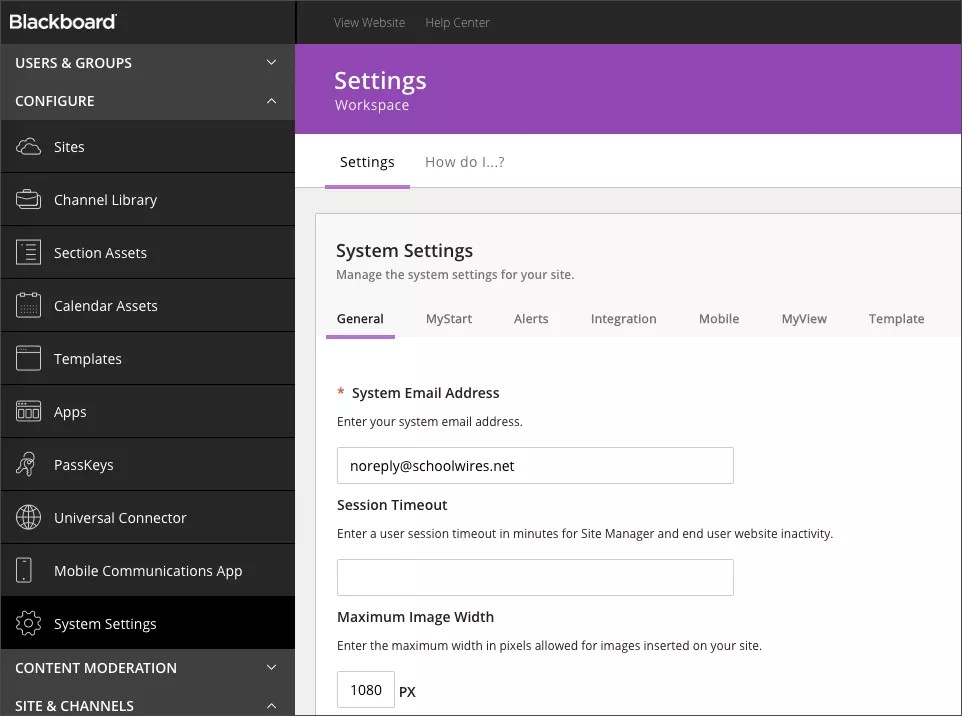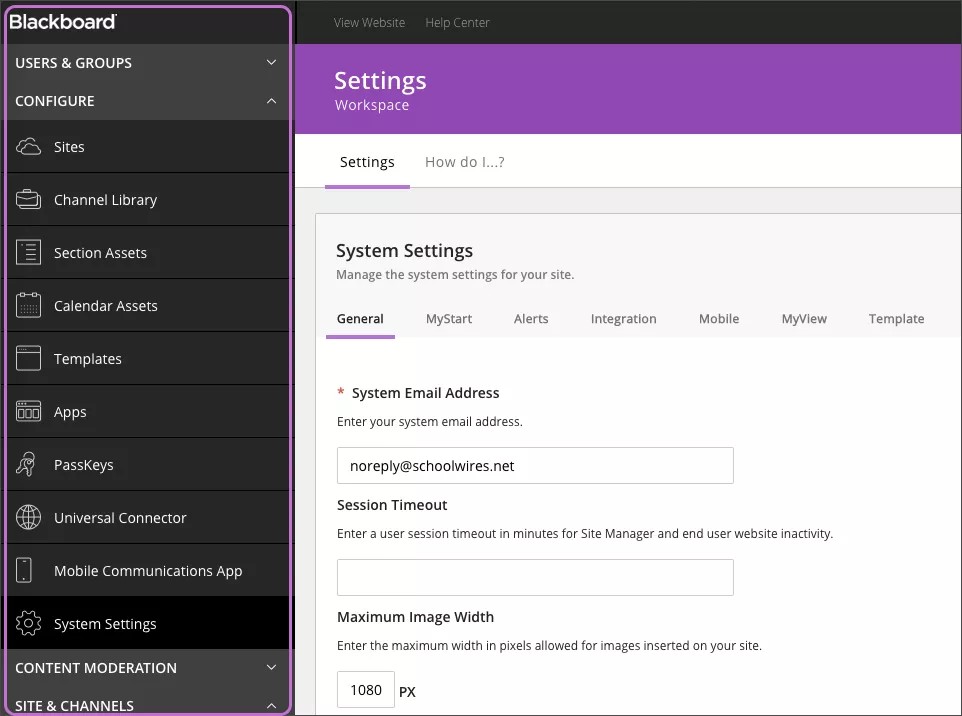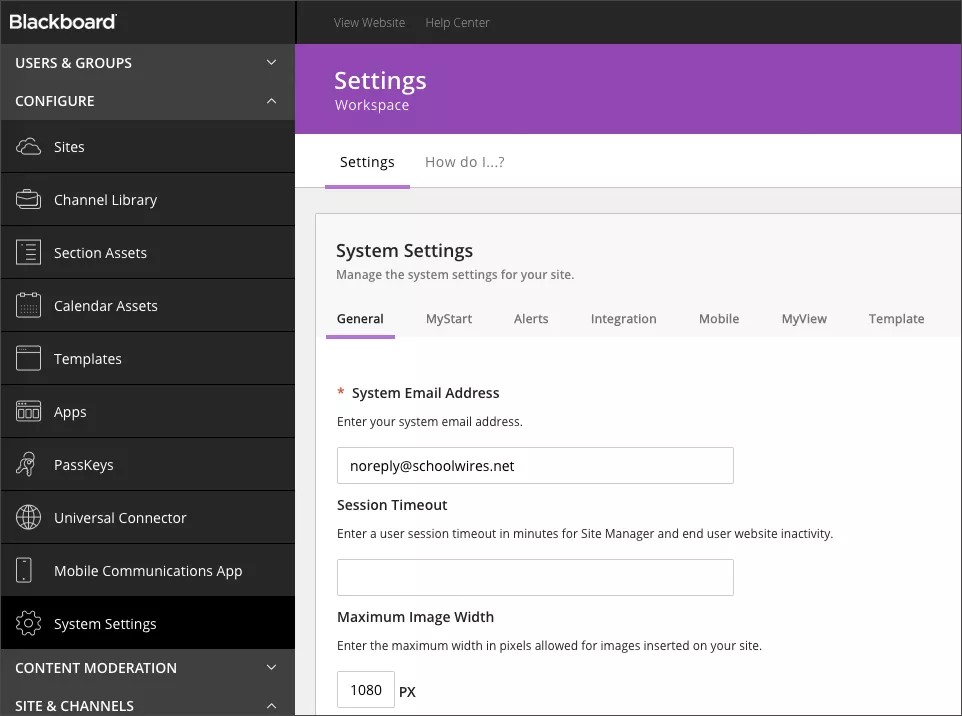Find Your Way Around
Navigate your website
Most school websites share the same basic navigation elements. However, depending on the site template, the elements can appear in different areas based on your school's chosen design.
- MyStart bar: Often at the top of your website, the MyStart bar gives quick access to the district home site, a menu to move between school sites, a sign in or account link, registration, and search.
- Dashboard: After you sign in, you'll see the dashboard where you can access your profile and information important to you. The dashboard is typically found on the left side of the page.
- Channels: Channels are options in a menu bar. They could be district contact information or a school teacher directory. Channels often have more than one section and are different for each site.
- Sections: Sections are the options available from the channel menu bar. Select a section to go to a page or collection of web pages.
How your site is organized
Think of your site and subsites as filing cabinets. Each drawer in the cabinet is a channel. Folders in the drawers are sections. Paper in the section folders are pages. And apps are the content on the pages.
- Sites and subsites: A website can be a site or a collection of sites. If it is a collection of sites, the site has a top district site and then school subsites below it.
- Channels: Each site or subsite has channels that help users to navigate the websites. The channels change depending on the site. They could be district contact information or a school teacher directory. Channels often have more than one section. Channels must be in the channel library before you can use them in your sites and subsites.
- Sections: Sections represent the second highest level of content organization on the site. If you add more than one section to a channel a menu of all of the sections appears when users move their pointer over the channel. Many districts and schools use sections to create their department, club, activity, sport, or teacher content and assign the appropriate user(s) editing rights to their section.
- Pages: Pages display the content the user sees. Sections can contain any number of pages.
- Apps: Apps are the building blocks of a page and help with formatting content. There are different apps for different types of content, such as text, images, and links.
Dashboard
After you sign in, you'll see the dashboard where you can access your profile and information important to you.
What you see on the dashboard changes if your site is integrated with the Blackboard Community Engagement solution or your Student Information System (SIS).
- All users
- Profile: Your personal profile information.
- Stream: List of events and announcements appropriate for you.
- Passkeys: If turned on, a list of secure, single sign-on access to approved web apps. Web apps run in the "cloud" and aren't installed on your computer.
- Sign out: Sign out of the site.
- Help: Open a tour of the dashboard.
- Parents and guardians
- Notifications: Access a list of messages—emails, texts, phone messages, and app messages. You also see alerts for the things important to you. If your site is integrated with Blackboard's Community Engagement product solution, you can see alerts about assignments and cafeteria balances.
- Student profiles: Depending on your district's licenses, you can also see your children’s student profiles. You'll see information on assignments, attendance, grades, and cafeteria balances.
- Settings: Select what you want to be notified about, such as low scores, cafeteria balances, and information about assignments.
- Teachers, administrators, directors, and editors
- Site Manager: If you have editing or administrative privileges you can access the Site Manager from the dashboard after you sign in.
Site Manager
Your district and school websites are built in the Site Manager. Depending on your privileges, use the Site Manager to manage users, configure sites, or add content to your pages.
Only users who can configure or edit your websites have access to the Site Manager. What you see in the Site Manager depends on your privileges.
Sign in to your website to access the Site Manager. After you sign in, find Site Manager in the basic navigation or dashboard and select it.
Navigate Site Manager
Everything in Site Manager is in three convenient areas.
- Top level navigation bar: This navigation bar gives you basic navigation.
- View your website
- Go to this help site
- Create a message
A Community Engagement license is required to create messages from here. To learn more, see Blackboard Community Engagement Solution.
- Sign into other licensed Blackboard products as licensed
- Sign out
- Content Browser: From the content browser you can access the settings and configuration for the different areas on the site.
From the content browser you can access the settings and configuration for the different areas on the site.
What you see in the content browser depends on your privileges. To learn more, see Passports and Privileges.
- Manage your users and groups
- Configure your site
- Moderate and approve content before it is posted to your site
- Manage your sites, channels, sections, and pages
If your screen is smaller than 1024 x 768 the content browser may be hidden. Select the menu by the Blackboard logo to open it.
- Workspace: The workspace is the area where you do all the work and is the main focus of your screen. The workspace changes depending on the area of the site you go to. You only see the tools and features you need in that workspace.
For example, select Users in the content browser to go to the Users Workspace and manage users. Or select your district to go to the Site Workspace and add content to the district website.
Workspaces
Site Manager has administrative and editing workspaces.
- Administrative
- All administrative workspaces have a blue header
- Users need an administrative passport
- Tasks range from user management to system settings
- Typically assigned to webmasters
- Editing
- Site, subsite and homepage Workspaces have a blue header.
- Users need an editor role
- Channel Workspaces have a red header
- Section Workspaces have a green header


